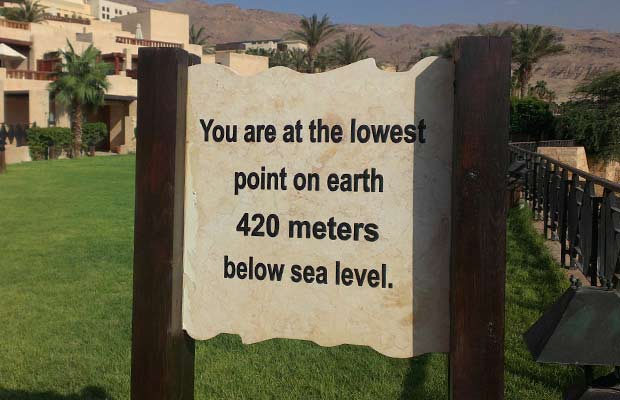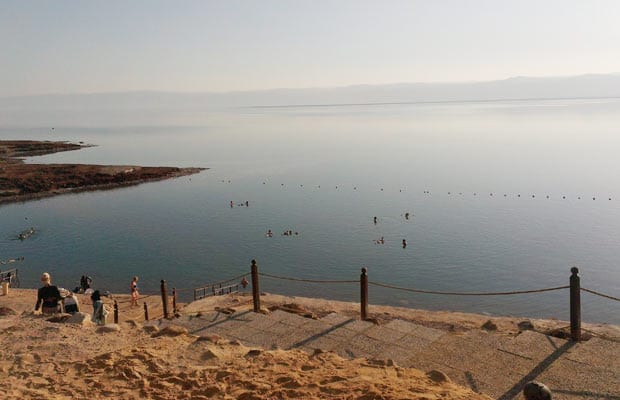Is the Dead Sea dying ?
 Known as the earth’s lowest elevation on land, the surface and shores of the Dead Sea are 420 metres below sea level. Unlike its name, the Dead Sea isn’t actually a sea, it is a saltwater lake. The Dead Sea is roughly 8.6 times saltier than the ocean. This salinity makes its environment too harsh for life to flourish, hence you cannot find any living being in this water body. Another peculiar feature of the Dead Sea is that the density of water is around 1,240 kg/m3, which means nobody can virtually drown in these waters.
Known as the earth’s lowest elevation on land, the surface and shores of the Dead Sea are 420 metres below sea level. Unlike its name, the Dead Sea isn’t actually a sea, it is a saltwater lake. The Dead Sea is roughly 8.6 times saltier than the ocean. This salinity makes its environment too harsh for life to flourish, hence you cannot find any living being in this water body. Another peculiar feature of the Dead Sea is that the density of water is around 1,240 kg/m3, which means nobody can virtually drown in these waters.
 Since centuries, the Dead Sea area has been popular as a major center for health research and treatment for several reasons. The mineral content of the water, the very low content of pollens and other allergens in the atmosphere, the reduced ultraviolet component of solar radiation, and the higher atmospheric pressure each have specific health effects.
Since centuries, the Dead Sea area has been popular as a major center for health research and treatment for several reasons. The mineral content of the water, the very low content of pollens and other allergens in the atmosphere, the reduced ultraviolet component of solar radiation, and the higher atmospheric pressure each have specific health effects.
 During my visit to Jordan, some of the locals ironically said that the Dead Sea is dying. The fact is that due to the over exploitation of the lake for commercial purpose, the water levels are decreasing year-on-year. Many companies are extracting minerals from the water and mud and exporting it as the world famous Dead Sea cosmetics. To save this important tourist attraction, the Jordan government is planning a new initiative called ‘The Red Sea–Dead Sea Conduit’. Also known as the Two Seas Canal, this proposed conduit (pipes and brine canal) would run from the Red Sea to the Dead Sea to stabilise the level of water. On the other hand, some of the locals fear that this will only decrease the salinity of the ‘magical’ Dead Sea waters and very soon this unique lake may lose its properties.
During my visit to Jordan, some of the locals ironically said that the Dead Sea is dying. The fact is that due to the over exploitation of the lake for commercial purpose, the water levels are decreasing year-on-year. Many companies are extracting minerals from the water and mud and exporting it as the world famous Dead Sea cosmetics. To save this important tourist attraction, the Jordan government is planning a new initiative called ‘The Red Sea–Dead Sea Conduit’. Also known as the Two Seas Canal, this proposed conduit (pipes and brine canal) would run from the Red Sea to the Dead Sea to stabilise the level of water. On the other hand, some of the locals fear that this will only decrease the salinity of the ‘magical’ Dead Sea waters and very soon this unique lake may lose its properties.

